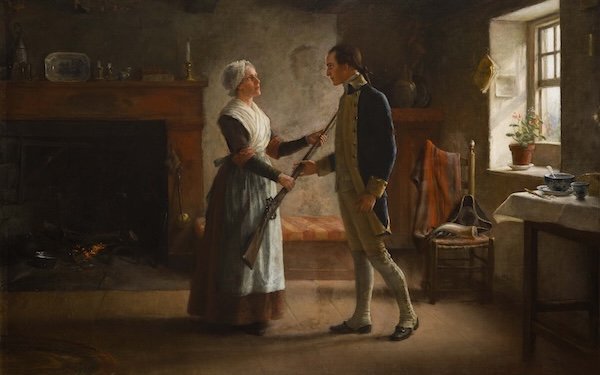
Ken Burns comes full circle when he
frames the Revolutionary War as a civil war.
“The war grew out of a multitude of grievances lodged against the British parliament by British subjects living an ocean away in
13 otherwise disunited colonies,” says narrator Peter Coyote a few minutes into Episode One of “The American Revolution,” now showing on PBS.
“It was also a savage civil war that pitted brother against brother, neighbor against neighbor, American against American, killing tens of thousands of them,” Coyote
says.
It is a sentence that might have been lifted verbatim from Burns’ other epic documentary about a war fought on American soil -- “The Civil
War,” the series that made him a star filmmaker when it premiered 35 years ago in 1990.
advertisement
advertisement
The
introductory narrative of “The American Revolution” takes up a style Burns established at the outset of the nine-episode, 11½-hour “Civil War” to illustrate the
geographic scope of the war far beyond the famous battlefields clustered east of the Mississippi that are known to all Americans.
Except for the locations he
inventories in “The American Revolution,” the approach is the same and it is just as illuminating.
“[The American Revolution] was fought in
hundreds of places from the forests of Quebec to the backcountry of Georgia and the Carolinas, from the rough seas off England, France, and in the Caribbean to the towns and orchards of Indian
country,” says the narration.
“The fighting would take place on roads and in villages and cities, woods and fields and along waterways with old
American names -- the Susquehanna, the Tennessee and the Ohio, the Oriskany, the Catawba and the Chesapeake. And along waterways with newer names -- the Charles, the Hudson and the Schulkyll, the
Brandywine, the Cooper and the Ashley. And finally, the York,” the narration continues.
The TV Blog first wrote about “The American
Revolution” eight days ago in advance of its premiere this past Sunday.
But after reaching the halfway point of this mesmerizing, 12-hour blockbuster
(after watching the first three, two-hour episodes Sunday, Monday and Tuesday), I came to the realization that the film is an out-and-out masterpiece and there is more to say about it.
What comes to the forefront for me is the pure audacity of the thing -- a 12-hour production being aired two hours at a time for six consecutive evenings (Sunday through
Friday) without a break in the entire 120 minutes.
Who makes 12-hour documentaries that take a reported 10 years to produce in this day and age of
micro-attention spans?
Ken Burns does and PBS lets him. It is a relationship between artist and patron that
likely does not exist anywhere else today.
The Burns documentaries have traditionally premiered this way, every day for the better part of a week, but unlike
the distant past, “The American Revolution” can be streamed.
Since Sunday, all 12 hours of the
series have been available to stream on the PBS app and PBS.org.
Still, for some of us, making the commitment to watch this extraordinary film for six
straight evenings on linear TV has its own rewards.
In this case, this nightly, two-hour commitment
represents an opportunity to tune out all outside noise, turn the ringers off on our iPhones and be transported to another world.
The above painting of a
Revolutionary War soldier saying good-bye is one of hundreds of paintings seen in “The American Revolution.” The artist is Jennie Augusta Brownscombe (1850-1936). Photo courtesy of
PBS.